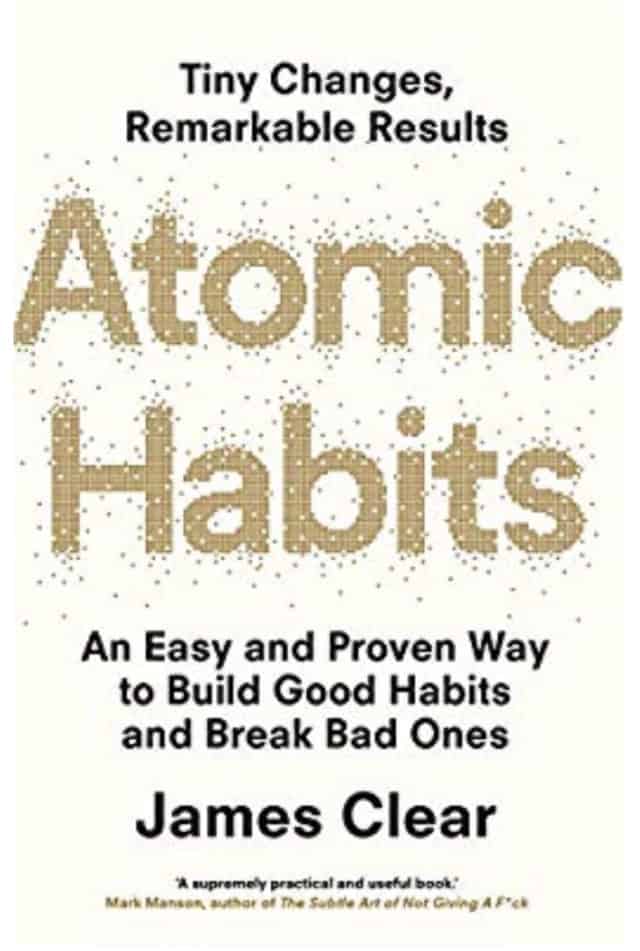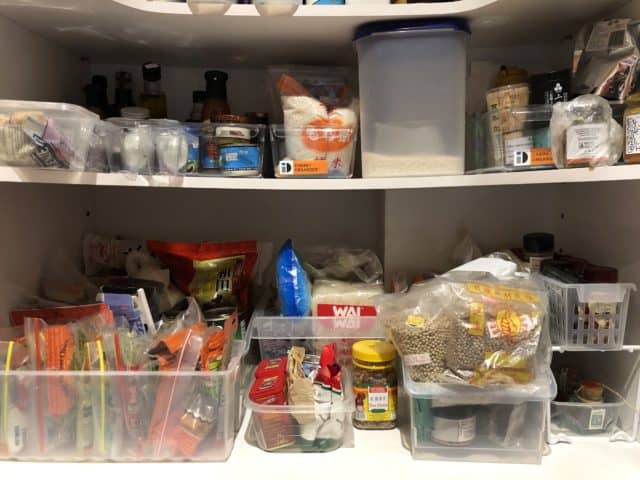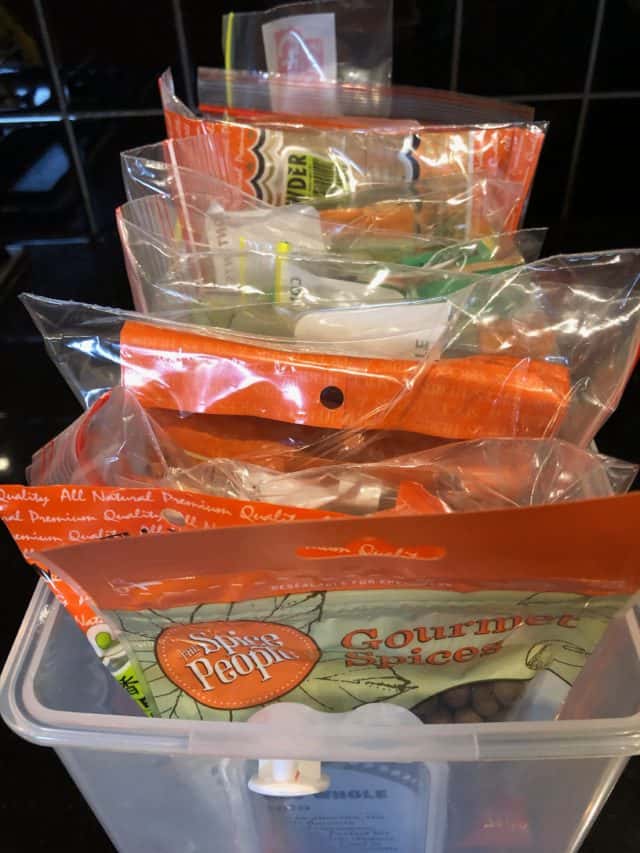Please note that this post contains affiliate links
I am stuck.
In bad habits land.
I used to think I am lazy, unmotivated and lack self control. I feel easily overwhelmed so I delay starting a task or project. Then I am unproductive, or get bored and just give up.
That is, until I read Atomic Habits by James Clear.
There is HOPE!
I first heard about this book from listening to Paula Pant’s Afford Anything podcast – episode 156 How to Build Incredible Habits with James Clear. I was very impressed and thought this was exactly what I needed to do. But did I do anything about it? NOPE.
I am embarrassed to say I finally read the book nearly a year after listening to the podcast. That is procrastination at its finest!
What I like about Atomic Habits
“An Easy and Proven Way to Build Good Habits and Break Bad Ones” claims the front cover.
It is a bold claim. But accurate. I find it incredibly helpful to write down a list of your good and bad habits at the start plus any new habits you want to create. My bad habits list is considerably longer!
I can attest that it is super easy to read and packed to the rafters with actionable tips and practical examples. After each chapter, the handy summary reinforces what you’ve just read.
It is logical and at the end of the book, you totally understand how habits are formed. But better still, it gives you a framework and the steps needed to build those good habits and break the bad ones.
But of course, it is then up to you to put all that into practice in your own life. No amount of reading books or listening to podcasts will make you do something if you don’t already want to do it.
What is a habit?
Clear defines a habit as “a behaviour that has been repeated enough times to become automatic.”
Your brain is constantly analysing situations and responding to them. It learns from how you respond to a situation in the past and predicts how you will respond to the same situation in the future. And when you do it enough times, it becomes automatic and your conscious mind no longer have to think about it – the response has passed to the unconscious mind.
For example, I walk into the house at night from a stressful day at work, heat up my dinner, sit in front of the television and play Candy Crush. I tell myself I need to unwind from a hard day’s work, that my brain needs a break. I do this every night and soon enough, it is an automatic response.
How automatic? I catch myself doing the same thing even though my work now is a lot less stressful. My brain still think that whenever I enter the house after work, I should turn on the TV and play Candy Crush at the same time.
So why do habits matter?
Habits matter because they are the “compound interest of self improvement.” I understand the power of compound interest in the arena of money so this makes complete sense to me. You do a little bit each day and the benefits stack up on top of each other over time.
‘Success is the product of daily habits – not once in a lifetime transformations.” I understand this too – you don’t build up your emergency fund in one day (unless of course, you already have lots of cash just sitting in a bank account).
For most people, it takes saving a small amount consistently over months or years to build up an amount sufficient to cover three to six months of expenses.
I also like the ‘forget about goals, focus on systems instead’ exhortation. If your goal is to achieve financial independence within 10 to 20 years, you may be discouraged by the slow process. So focus instead on the steps or look at it another way, build good habits to get you there.
For example, pay yourself first from each pay cheque by automating weekly transfers to a retirement account or a savings account. Reduce your debt. Track your expenses. And so on. These steps will eventually take you to your end goal of financial independence.
The science of a habit
According to Clear, there are four stages of a habit – cue, craving, response and reward. That is, the cue triggers a craving which motivates a response which then provides a reward. In an endless feedback loop – the Habit Loop.
So using my example above, being stressed after work is the cue; this triggers a craving to alleviate stress; which in turn motivates me to watch TV and play Candy Crush (response); which then provides me the reward of unwinding after a long day. Because this reward satisfies me (in the short term), I will repeat it all over again the next night when faced with the same cue.
But in fact, I don’t really want to watch TV or play Candy Crush – what I really want is to unwind after a stressful day. My habit is a solution to my problem. Watching TV or playing Candy Crush is not inherently bad of itself, or say, if I limit it to half an hour.
Unfortunately for me, I then fall asleep on the couch, wake up from my nap hours later and then finally go to bed in the early hours of the morning. All this interrupted sleep means I struggle to wake up in the morning.
It is amazing once I break down a habit into these four stages, it is quite clear what I have to do.
The four laws of behaviour change
In Atomic Habits Clear sets out a framework to help us further – his laws of behaviour change tackle each of the four stages of a habit.
First law – Make it obvious
Second law – Make it attractive
Third law – Make it easy
Fourth law – Make it satisfying
Simply apply these laws to create a good habit and do the inverse to break a bad habit.
First law - Make it obvious
The first law is about the cue. If you want to create a good habit, the cue needs to be obvious. If you want to break a bad habit, make the cue invisible.
Instead of relying on motivation and self control, we can design our environment to make the cue visible or invisible, to give us a head start to creating or breaking a habit. Combine this with “implementation intention” to be even more effective. Have a concrete ‘how’ – I will do it at this time at that location.
My doctor wants me to take a Vitamin D supplement daily. It has been suggested before as my levels are quite low. Many years ago when I tried taking it daily, I lasted a week, at best. The next time I looked at the bottle, it was past its expiry date.
This time round, I know about making the cue obvious and visible. I put the Vitamin D bottle next to my drinking water on the kitchen bench. Not hidden away in the cupboard. I tell myself I will take one capsule every morning in my kitchen, with my first drink of water after waking up.
I already drink water upon waking up – a current habit. Linking a new habit to a current habit is termed ‘habit stacking’.
And it works! I am amazed that I have not missed a single day. It’s nearly 60 days and counting.
Second law - Make it attractive
It is hard to do something when it is not attractive. Or goes against the norm.
Clear suggests pairing an action that you want to do with an action you need to do – temptation bundling.
For example, I want to declutter my pantry – an overwhelming task which does not bring me joy. I also need to eat dinner. So I tell myself that I can’t eat dinner unless I start on the pantry. Initially, I do it in the two & a half minutes while I heat up my dinner. Then I just want to get the job done so I do a good half hour before I heat up my food.
The pantry is done, yay! So now I use the half hour before I heat up my food to tackle another chore. My real aim is to have as much free time as possible to do enjoyable things on the weekends instead of doing chores. So the more I can get done at night after work, the more free time I will have on the weekends.
Of course, not every night is productive. There are nights when I revert to watching TV and playing Candy Crush. But 3 or 4 out of 5 nights is a huge achievement for me. I surprise myself that I can clear my ironing backlog, file paperwork, clear the fridge and freezer and so on.
Another way is to join a community where the behaviour you want is the norm. For example, this nightly chore routine started with my friend and I being accountable to each other. We tell each other what we hope to achieve that night and then confirm the next day whether we did the chore or not. We encourage and support each other, especially when we are tired after a trying day at work and the last thing we want to do is tackle a chore that night.
Third law - Make it easy
When we reduce the friction required for the new habit, it is much easier to stick with it. I struggle with procrastination, and just starting something takes a long time. Clear has a solution – the two minute rule – “when you start a new habit, it should take less than two minutes to do.”
I have long desired a morning routine but am always defeated because my night routine is so bad. Reminder – the watching TV and playing Candy Crush leads to me sleeping on my couch which then interrupts my sleep when I wake up to go to my bed.
So I decide to make my mornings easier by prepping my breakfast the night before. I only focus on this one aspect rather than establishing a whole night routine. Baby steps.
I wash my stovetop coffee pot and fill it with ground coffee. I sit the pot on the stove, ready to just turn on the gas in the morning. Next is my breakfast – add milk, fruit, spice etc to oats and leave in fridge. All I have to do the next morning is heat it up in the microwave, add honey and voila, breakfast is served in less than 2 minutes.
The above getting ready for breakfast “chore” takes 2 minutes, immediately after washing up dinner dishes and before I make a cuppa and settle down on the couch. So far so good. I love that my mornings are made easier and because it is so easy to prepare oats and coffee the night before, I continue doing so.
Fourth law - Make it satisfying
Instead of focusing on the outcome of a habit, we focus on the ‘feel good’ instant reward an action brings. Exercising to lose weight is great but you will not lose weight after a day or a week – it takes months and years. It is better to focus on ‘feeling good’ after each exercise session.
Incidentally, this is why I don’t like to exercise. I never feel good after exercising ie I never get the instant reward. I am exhausted, my muscles ache … others look at this as a good thing. Me? Meh. So I am loathed to do it again.
This is where habit tracking is powerful. I walk with my friend after work every weeknight for 30 to 40 minutes. At first, I rejoice when there is a downpour and we are unable to walk. But then, after about 2 weeks of walking every single day, we do not want to break our record. So now I pray that the rain stops by the time we are ready for our walk.
And never miss twice – that is another lesson I learned from Atomic Habits. If we do miss a night due to rain or a late meeting, we make sure we definitely walk the following night.
Final thoughts
At one stage, I was obsessed with looking for productivity gains – how can I optimise this and that in my limited time.
But as I apply what I have learned from Atomic Habits the productivity gains happen naturally. I build one habit at a time and as they add up and become automatic, I have more time to devote to another task or project.
In the bonus material, Clear writes about the timing of starting a new habit. Look at your energy and time commitments, then choose a suitable time to start your habit.
I must declare here in total transparency that I do have more time and energy now since I transitioned to a less stressful role and work less hours. More time and energy to look at my daily routines and think about my habits.
But I still believe that everyone can benefit from using the principles laid down in Atomic Habits. It is empowering to know that I can build good habits despite being lazy and unmotivated at times. I just need to focus on systems instead of the end goal.
Oh, and I eat my dinner sitting at the dining table now instead of the couch. I turn off the TV once the programs I specifically want to watch have ended. And no longer play Candy Crush mindlessly. I read a physical book in bed (no screen time) to help me sleep. Slowly but surely, I am creating a good night routine.
I highly recommend Atomic Habits – I am positive that it will help you as it has helped me.



